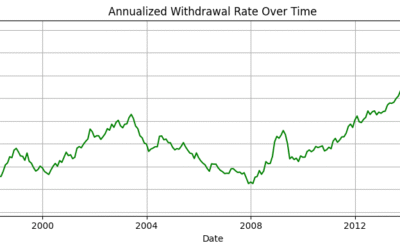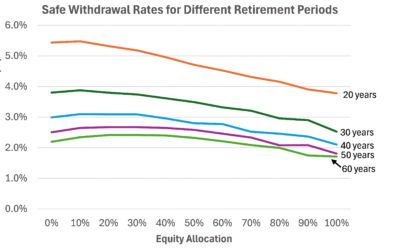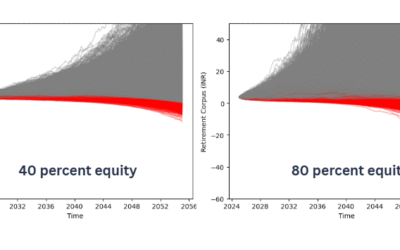Despite fundamental differences in the NBFC universe, all NBFCs are today facing the brunt of a liquidity squeeze
Events revolving around the multi-notch downgrade of Infrastructure Leasing and Financial Services (IL&FS) last month have caused a liquidity squeeze for the entire non-banking financial company (NBFC) sector. What started as a debt default by a single NBFC has almost turned into a funding crisis for all. Risk aversion in debt markets has heightened to an extent that the market has lost its ability to make a distinction across NBFCs, bracketing all of them in the same risk category, irrespective of the underlying nature of their assets and liabilities. The reality is that the sector is very heterogeneous and constitutes different types of companies with different business models addressing very different underlying borrower segments. This nuance needs to be seen, understood and acknowledged for markets to resume normalcy.
NBFCs can broadly be divided into three segments—asset financing, personal loans and business loans. The predominant asset financing NBFCs are commercial vehicle financiers. The remaining NBFCs provide a range of personal and business loans with widely varying business models. Housing finance companies (HFCs), which provide housing loans, can be considered as specialized NBFCs that have a separate regulator. Within these broad classifications, there are further differentiations based on the borrower segment the NBFCs target.
While financial markets do exhibit contagion across similar businesses when under stress, the differences in business models and the diverse target segments of NBFCs are stark. And hence, assessing their risks without looking into the nuances of the underlying nature of assets and liability may not give the correct picture. This is most evident in the NBFCs and HFCs focused on the under-banked population, which include micro-finance institutions, used commercial vehicle financiers, small business loan financiers and affordable housing financiers.
Using sample quantitative and quality data from hundreds of NBFCs we work with across sectors, we analysed the current situation. Catering to the requirements of a borrower segment that is different from traditional NBFCs, these lending institutions seem to fare well across multiple risk drivers.
There are three primary drivers of the current risk aversion for NBFCs. The first driver relates to short-term funding being used to finance long-term assets—an asset liability mismatch (ALM). For micro-finance, the weighted average loan tenure ranges from eight to nine months, for commercial vehicle finance, it is 16 to 18 months, while for small business finance, it is 12 to 16 months. Thus, the asset side duration for these businesses is very short.
On the liabilities side, the duration either mirrors the asset side, or is longer, and generally ranges from one to two years. Thus, these small- to mid-sized NBFCs run a positive ALM mismatch. Even in the case of affordable housing finance, where one would expect a wide ALM mismatch, low asset duration for affordable housing financiers reduces the ALM gap to negligible. This is further aided by low leverage and high capital adequacy.
The reason for the excellent ALM profile of lending institutions in our universe is straightforward—loans to the under-banked are small-ticket, short-tenure and fast-amortization. The low asset duration in these NBFCs is thus necessitated by their business model and is not a temporary feature. On the liability side, the long duration is supported by the fact that most debt funding to these NBFCs is sourced from banks and wholesale NBFCs. In both cases, funding is a ‘loan to originate’ and, therefore, broadly maps the cash flows on the asset side.
The second cause of current risk aversion towards NBFCs has to do with refinancing or rollover of short-term capital market borrowings. This concern is linked to the ALM issue discussed above as smooth rollover of shorter duration liabilities when assets are of longer duration is key for business continuity.
In recent years, the share of commercial paper funding to NBFCs subscribed by mutual funds has shown an increasing trend. Commercial paper funding (of up to 90 days) for NBFCs from mutual funds has increased from ₹ 50,000 crore in March 2016 to ₹ 1.2 trillion in September 2018. This increase in money market borrowings has come in sharp focus recently as mutual funds have withdrawn from the market for NBFC paper. It is estimated that NBFC and HFC debt of about ₹ 2.5 trillion is due for roll-over in the next six months. This has led to heightened refinancing risk for those who are dependent on such funding.
The drying up of the money market for NBFC commercial paper has not negatively affected NBFCs catering to the under-banked, as short-term capital market borrowings of these NBFCs are very low. About 99% of the commercial papers issued in India have a rating of A1 or above. In our universe of NBFCs and HFCs, less than 20% of entities have a short-term rating, which is necessary for issuing a commercial paper. Moreover, only 9% of the entities has tapped the commercial paper market in their lifetime.
The third cause for concern has to do with asset quality. This primarily pertains to NBFC exposure to the real estate sector—either as builder funding or loan against property (LAP). Builder funding is non-existent in the loan book of NBFCs in our universe. In the case of LAP portfolio of affordable housing financiers or small business loan financiers, the asset quality continues to be above par as the sourcing of these loans has been outside the ultra-competitive urban LAP market. More importantly, the property underlying the LAP loans is typically self-occupied and not purchased for investment purposes.
Despite fundamental differences in the NBFC universe, all NBFCs are today facing the brunt of a liquidity squeeze. Access to steady predictable debt is their lifeline. For NBFCs with sound fundamentals that are caught in the current situation, a short-term squeeze on funding can be managed by curtailing growth. A prolonged drying up of credit, however, will start impacting them and their borrowers. Over the years, NBFCs have played an important role in providing growth capital to various sectors of the economy. What is required is a concerted effort across stakeholders to prevent a market contagion that can cut off the critical supply of capital to the grassroots of the nation.
(This article was published in LiveMint on November 12, 2018 and can be accessed from the link https://www.livemint.com/Opinion/Unek43s7CitXfsgegtGGOL/Opinion–A-nuanced-understanding-of-the-NBFC-sector.html)







0 Comments